OnePlus 10 Pro vs. Google Pixel 6 Pro: Which Android phone wins?
Our OnePlus 10 Pro vs. Pixel 6 Pro face-off compares two of the best Android phones head to head
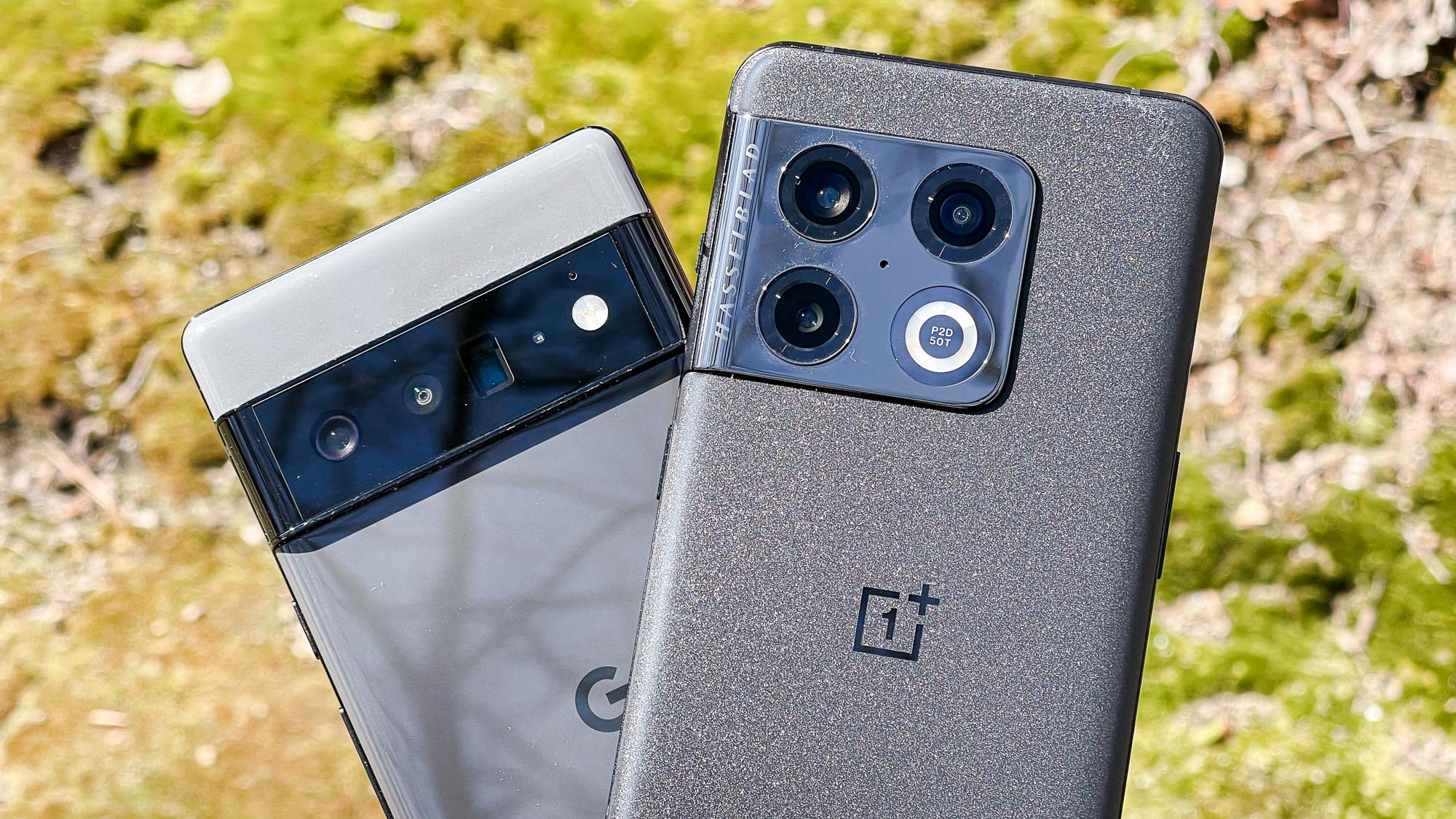
This OnePlus 10 Pro vs. Google Pixel 6 Pro face-off pits the new value Android flagship champs against each other. Both cost $899 and feature great cameras and powerful hardware. But there can only be one winner.
The OnePlus 10 Pro features the latest Qualcomm silicon, 8GB of RAM, the second-generation Hasselblad camera system, and a beautiful display. It’s also one of the longest-lasting Android flagships we’ve tested in our battery life testing. But the Pixel 6 Pro packs in more AI and machine learning smarts with its Tensor chipset, as well as some of the best cameras you can get on a phone.
The Pixel 6 Pro also enjoys some other advantages, as you’ll see below. Here’s how the OnePlus 10 Pro vs. Pixel 6 Pro face-off shapes up.
OnePlus 10 Pro vs. Google Pixel 6 Pro: Specs
| Row 0 - Cell 0 | OnePlus 10 Pro | Pixel 6 Pro |
| Price | $899 | $899 |
| Display | 6.7-inch AMOLED (3216 x 1440) | 6.7-inch OLED (3120 x 1440) |
| Refresh rate | 1-120Hz | 10-120Hz |
| CPU | Snapdragon 8 Gen 1 | Tensor |
| RAM | 8GB, 12GB | 12GB |
| Storage | 128GB, 256GB | 128GB, 256GB, 512GB |
| Rear cameras | 48MP (f/1.8) main, 50MP (f/2.2) ultrawide, 8MP (f/2.4) 3.3x telephoto | 50MP (f/1.85) main, 12MP (f/2.2) ultrawide, 48MP (f/3.5) 4x telephoto |
| Front camera | 32MP (f/2.2) | 11MP (f/2.2) |
| Battery | 5,000 mAh | 5,000 mAh |
| Battery life (Hrs:Mins) | 11:52 (120Hz), 12:39 (60Hz) | 7:49 (Adaptive), 7:55 (60Hz) |
| Charging | 65W wired, 50W wireless | 23W wired, 23W wireless (Pixel Stand), 12W Qi |
| Size | 6.42 x 2.91 x 0.34 inches | 6.5 x 3.0 x 0.4 inches |
| Weight | 7 ounces | 7.4 ounces |
| Colors | Volcanic Black, Emerald Forest | Stormy Black, Cloudy White, Sorta Sunny |
OnePlus 10 Pro vs. Google Pixel 6 Pro: Price and availability
The OnePlus 10 Pro and Pixel 6 Pro come in at the same price: $899. Both are incredible values, especially in a world where the current king of the best Android phones, the Galaxy S22 Ultra, starts at $1,199 — the similarly-specced iPhone 13 Pro and Galaxy S22 Plus start at $999.
But where the OnePlus 10 Pro and Pixel 6 Pro diverge is in what specs you get for your $899. The former comes with 8GB of RAM and 128GB of storage — there’s a 12GB/256GB coming some time in the future — while the base model Pixel 6 Pro comes with 12GB of RAM and 128GB of storage with 256GB and 512GB options available.
RAM isn’t the be-all-end-all, but it definitely can make a difference in some fringe cases. Also, the Pixel 6 Pro is a bit easier to get your hands on at more carriers. The OnePlus 10 Pro’s official carrier partner is T-Mobile; otherwise you need to buy the phone unlocked. Also note that the OnePlus 10 Pro does not support 5G on AT&T’s network.
The Pixel 6 Pro wins since you technically get more for your $899, plus it’s generally easier to get your hands on one through carriers (and thus have access to financing).
Winner: Google Pixel 6 Pro
OnePlus 10 Pro vs. Google Pixel 6 Pro: Design
The OnePlus 10 Pro is an evolution of the design we saw on the OnePlus 9 Pro, which some might think takes a few too many pages from Samsung’s playbook. That’s not to say the phone doesn’t look good, because it certainly does. The camera array blends into the frame and the device as a whole looks great with very clean lines and curves. It’s also sturdy with its 7-ounce weight evenly distributed.
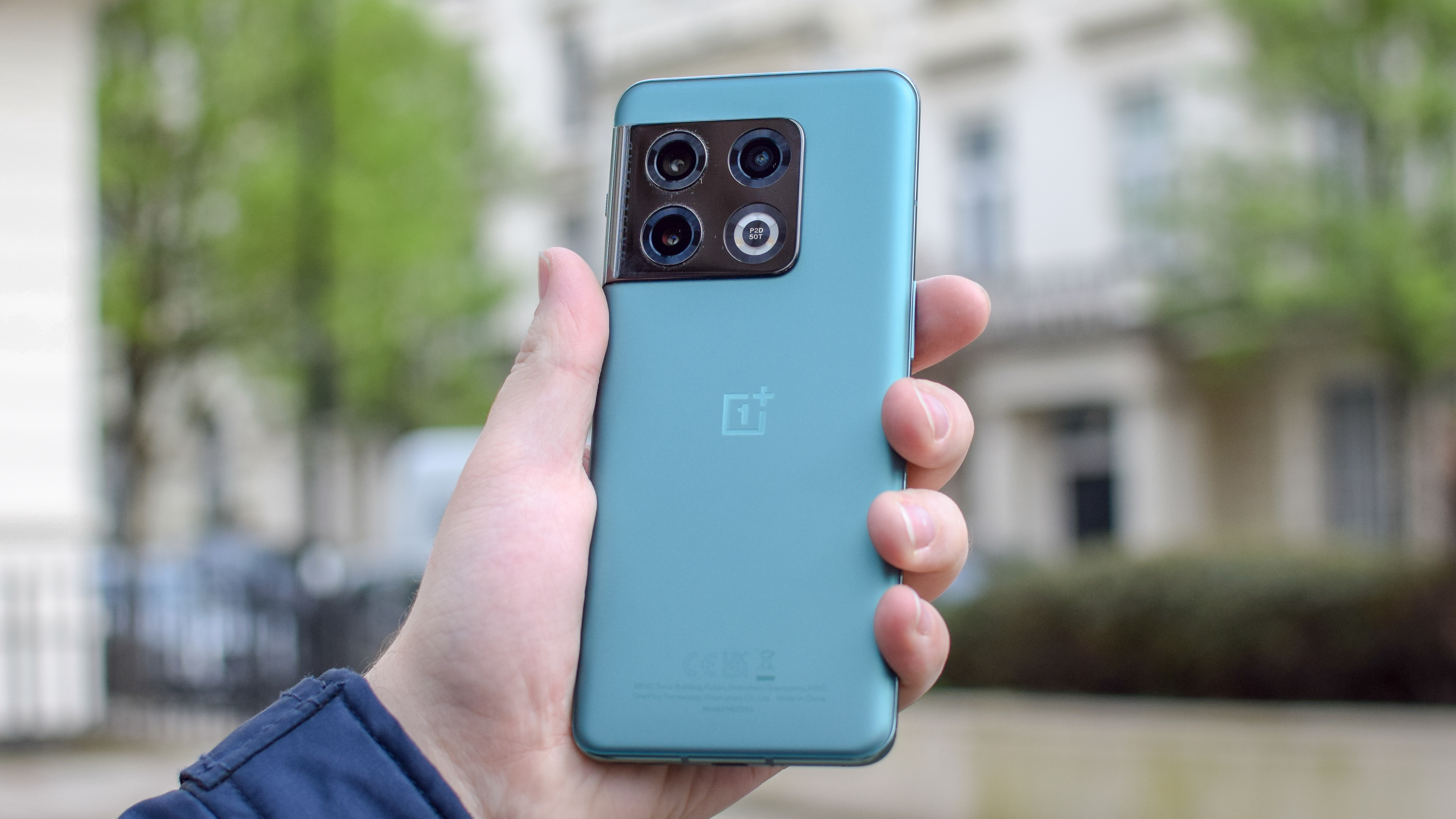
However, one flaw from previous OnePlus phones persists: the question of water resistance. The unlocked model still doesn’t have an official IP rating, but the T-Mobile version is IP68-certified. We assume that the unlocked OnePlus 10 Pro is also IP68, but we can’t say for sure. Why OnePlus continues to drag its heels in this regard is beyond us.
The Pixel 6 Pro, however, threw Google’s previous design language out the window. No longer is the camera array tucked in a square up in the corner (like an iPhone); it’s now a bar that spans the width of the phone and juts out noticeably. This is a striking look, even if not everyone is sold on it. We like the solid build construction, plus how nice the phone feels to hold.
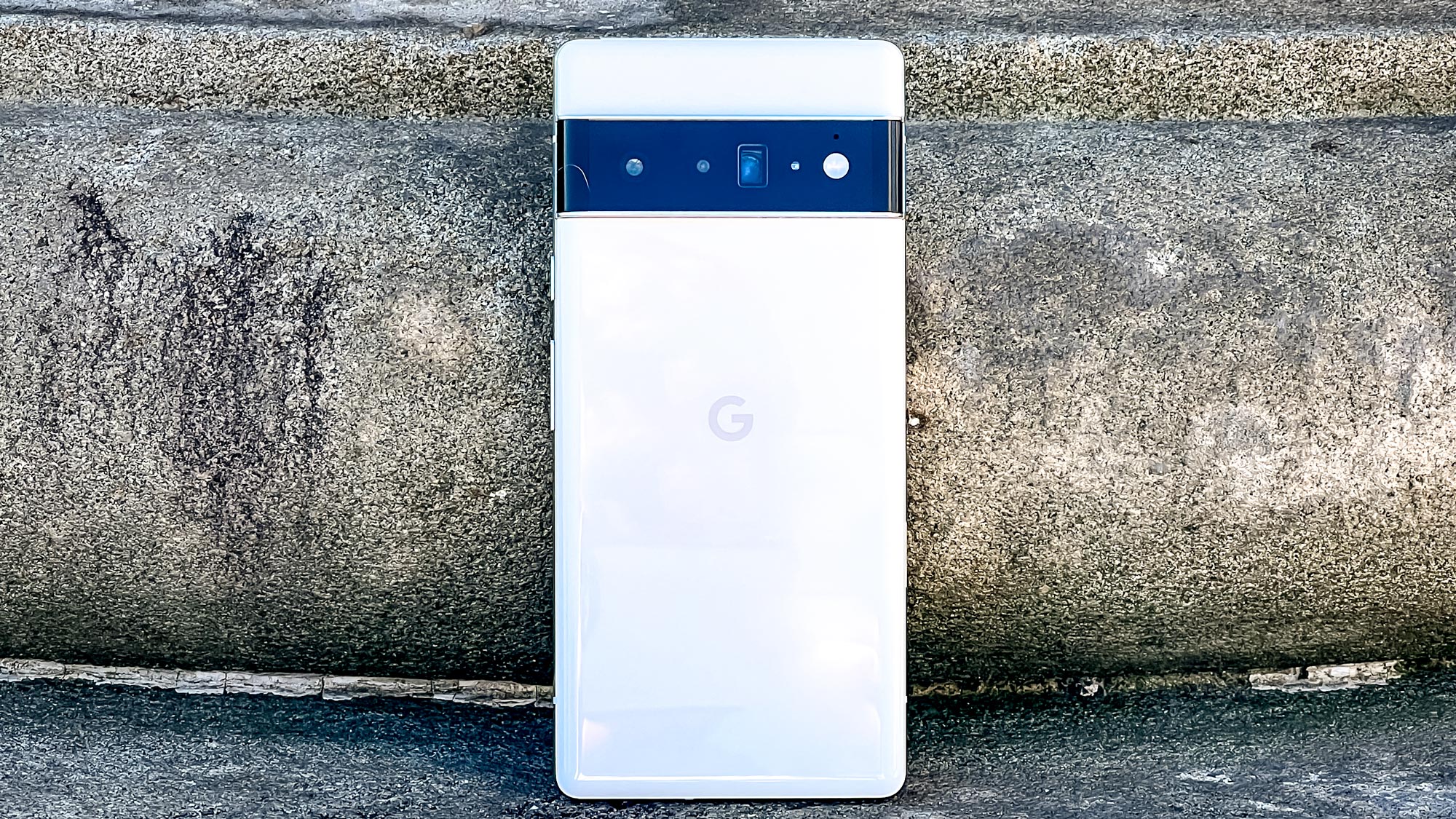
And unlike the OnePlus 10 Pro, the Pixel 6 Pro features IP68 certification across the different models. That means it can survive submersion up to 1.5 meters (4.9 ft) for 30 minutes. This gives the Pixel the edge over the OnePlus, since whatever model you get, you can rest assured it’ll have official ingress protection.
One thing to note, Google has partnered with iFixit to help make repairs for the Pixel 6 Pro and older Pixel phones a lot easier.
Winner: Google Pixel 6 Pro
OnePlus 10 Pro vs. Google Pixel 6 Pro: Display
Both the OnePlus 10 Pro and Pixel 6 Pro sport 6.7-inch displays, the former using AMOLED technology and the latter opting for OLED. They each have adaptive refresh rates, meaning the phones can slow down the refresh rate depending the content onscreen. The OnePlus 10 Pro goes down to 1Hz while the Pixel 6 Pro goes to 10Hz.
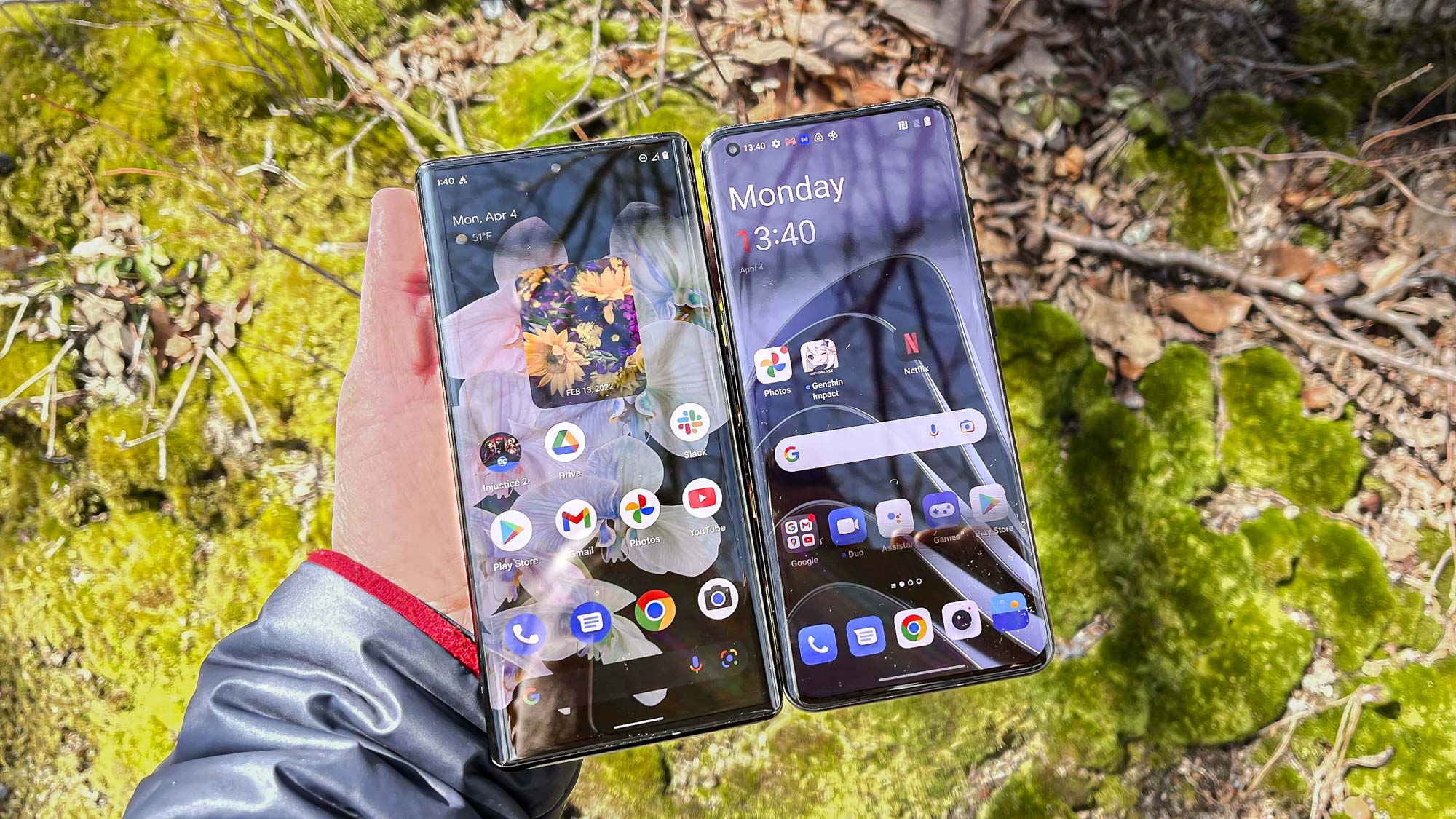
In the Natural color profile, the OnePlus 10 Pro reproduced 119% of the sRGB spectrum and 84% of the more challenging DCI-P3 color gamut. The Pixel 6 Pro managed 104% and 74%, respectively. And for the Delta-E color accuracy score (where 0 is perfect), the OnePlus 10 Pro received 0.23 while the Pixel 6 Pro got 0.3.
In practice, the OnePlus 10 Pro is a nicer display to look at, though the Pixel 6 Pro gets noticeably brighter at 842 nits versus the OnePlus’ 734 nits. But the colors are richer on the latter’s display. Some of the best examples of this are the saturated Genshin Impact and Blade Runner 2049 with its neons and harsh backdrops. The Pixel’s isn’t bad at all, but colors pop more on the OnePlus 10 Pro and they retain their accuracy even when the display is dimmed.
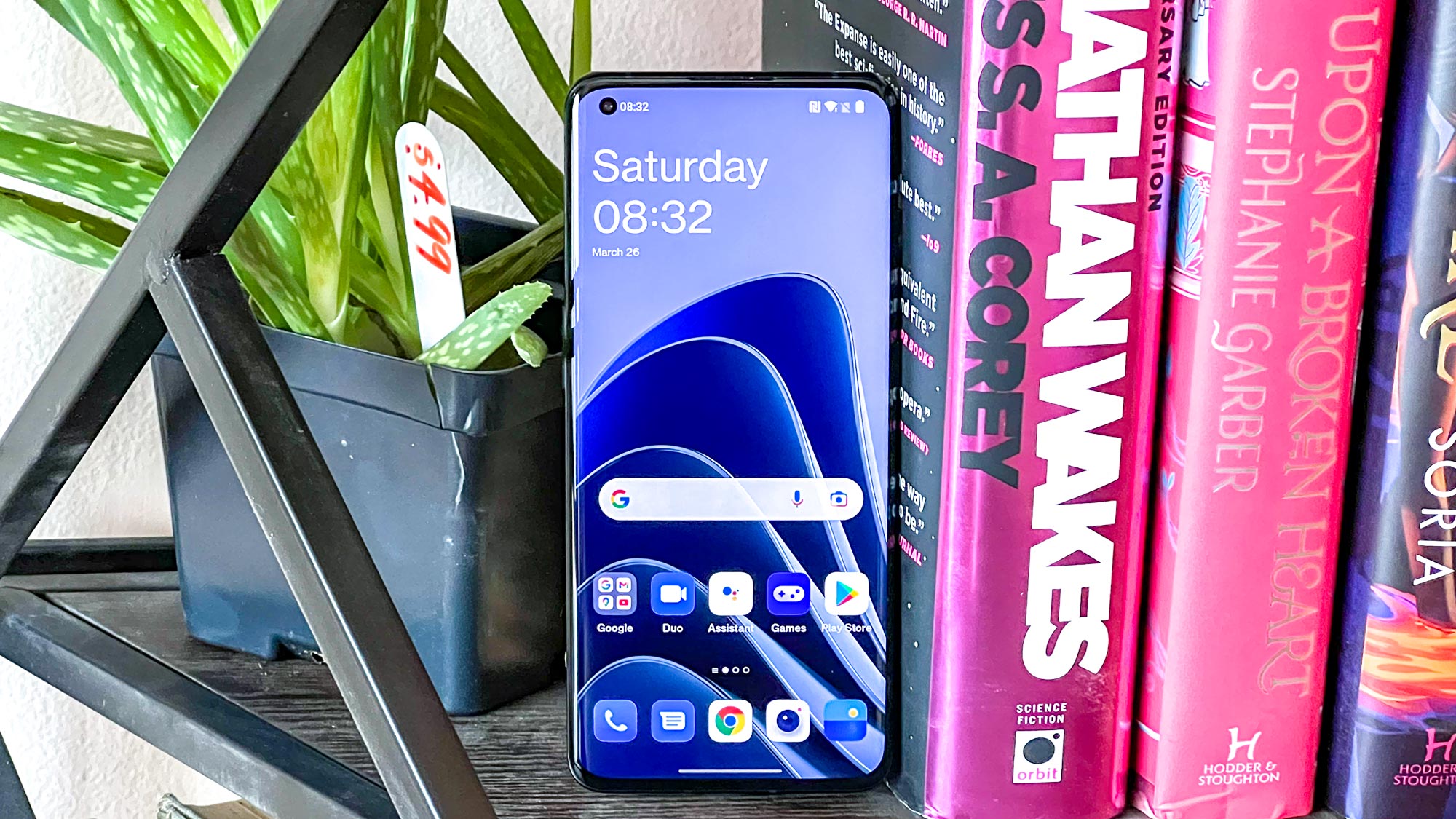
While the OnePlus 10 Pro is slightly better to look at, the Pixel 6 Pro is noticeably brighter, which is key for outdoor use. Neither comes close to the Galaxy S22 Ultra, but we have to call a draw here.
Winner: Draw
OnePlus 10 Pro vs. Google Pixel 6 Pro: Cameras
When it comes to cameras, the OnePlus 10 Pro and Pixel 6 Pro are fairly close. The former has a 48MP main sensor paired with 50MP ultrawide and 8MP telephoto ones — you get 3.3x optical zoom. The front-facing camera clocks in at 32MP. The Pixel 6 Pro sports 50MP main, 12MP ultrawide, and 48MP (4x optical zoom) telephoto cameras. It snaps selfies with a 11MP front camera that can zoom out to 0.7x for ultrawide pictures.
Starting this camera face-off is this photo of a flower. The OnePlus 10 Pro went for a brighter approach, with the leaves in the background approaching overexposure. The purple of the flower petals still look rich with softer shadows. However, the Pixel 6 Pro wins with deeper, more natural colors, a controlled level of exposure, and stronger focus.
Looking indoors, the OnePlus 10 Pro and Pixel 6 Pro squared off in this photo of a produce stand at a grocery store. I think the OnePlus image is brighter (almost too bright, look at the lights in the top right corner), but it loses some small details like the separation between the apples. The Pixel image has slightly sharper details, but there’s also a greenish tint with dimmer lighting. That could be down to the room’s lighting, though, and it might actually be more accurate. Overhead fluorescent lights are never easy on phone cameras, nor are they often pleasant scenes.
OnePlus really talked up the OnePlus 10 Pro’s ultrawide capabilities, so let’s check that out. Like with the flower photo, the OnePlus shot is brighter than the Pixel’s, but I can’t shake the feeling that some of the colors look almost washed out. I also see fewer details in the water, especially close to shore, whereas you can make the individual rises in the water in the Pixel’s image. I also noticed the deeper blue in the sky, and I appreciate the more realistic color profile on Google’s phone.
We tested both phones at 20x digital zoom.. Right away, the Pixel is the clear winner. The geese in the OnePlus 10 Pro’s shot are fuzzy and grainy — this perfectly displays the problems with high digital zooms. The Pixel 6 Pro did a much better job thanks to Google’s Super Res Zoom technology, which cleans up the zoomed image with AI. The goose feathers are much smoother, while they’re almost a blob in the OnePlus picture. Colors on the Pixel’s image are also way better.
This portrait comparison is interesting. The OnePlus 10 Pro’s portrait is warmer and more inviting, not to mention a bit brighter. But it applied a lot of smoothing to Mark’s face, negating some of the wrinkles and lines. The blur radius is also very pleasing. The Pixel 6 Pro did a better job of showing the details of Mark’s face (which he may or may not like), but it’s dimmer with more muted colors. It’s got a drab look with harsh shadows. The Pixel also zoomed in more, creating a more artistic effect that focuses on the subject’s face. But I think the OnePlus 10 Pro, despite its aggressive face smoothing, wins this one.
Comparing OnePlus Nightscape to Google Night Sight also proved interesting. The OnePlus 10 Pro’s image is much cooler, but it’s also darker than the Pixel 6 Pro’s. The latter is brighter, making it easier to make out the vodka bottle (even if I had a hard time reading the label thanks to the soft focus). Both images are noisy as you might expect, but I think the Pixel’s picture better and more realistically captured the scene. But Nightscape has come a long way recently.
Finally, with selfies, the OnePlus 10 Pro took the bright approach again. The photo of Mark has stronger highlights, but it’s overall a nice image that captured his face’s details better than the portrait did. (Face smoothing is a tweakable setting on the OnePlus 10 Pro, but we kept all settings at default.) The Pixel 6 Pro is a tad darker, but it’s also warmer since the phone didn’t crank up the exposure. The shadows are deeper, almost masking Mark’s eyes. However, his skin tone is much more lifelike than in the OnePlus 10 Pro’s selfie. I prefer the toned down, more natural colors in the Pixel’s image.
The OnePlus 10 Pro put up a great fight, especially with selfies and portraits. But the Pixel 6 Pro came out on top due to its stronger night mode performance, more natural colors overall, and better exposure control.
Winner: Google Pixel 6 Pro
OnePlus 10 Pro vs. Google Pixel 6 Pro: Performance
The OnePlus 10 Pro uses the latest Qualcomm Snapdragon 8 Gen 1 processor, while the Pixel 6 Pro rocks Google’s first-generation Tensor chip. In raw benchmarks, the OnePlus 10 Pro wins in computing and graphics tests. For example, the OnePlus 10 Pro scored 3,482 in the Geekbench 5 multicore test, while the Pixel 6 Pro managed 2,760.
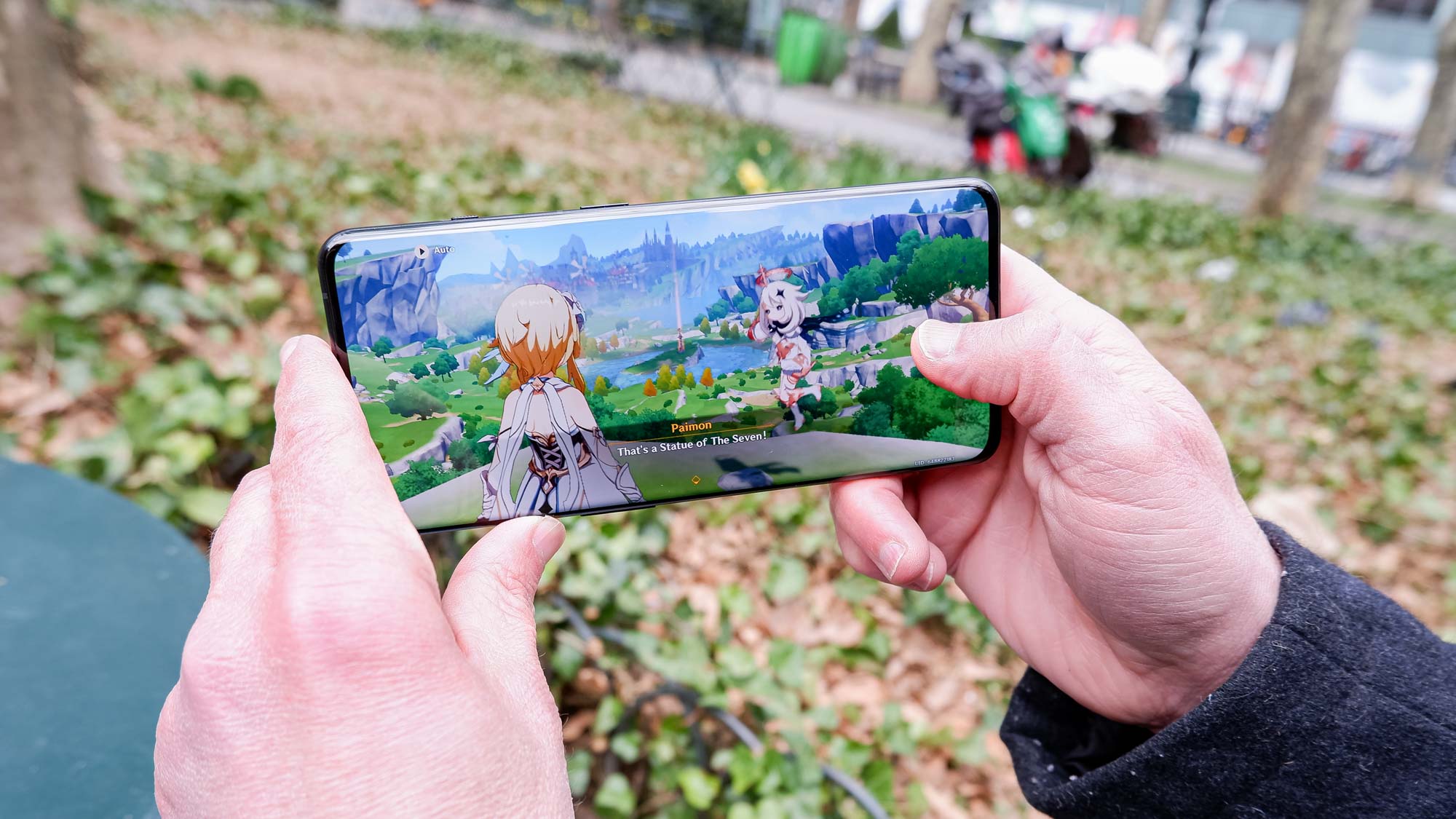
In the 3DMark Wild Life Unlimited gaming benchmark, the OnePlus 10 Pro had an average of 61 frames per second. Compare that to the Pixel 6 Pro’s 40 fps. From these results, it’s clear that the OnePlus 10 Pro is the superior gaming device. The phone also features a brand new cooling system, helping keep the Snapdragon 8 Gen 1’s temps down, thus reducing throttling.
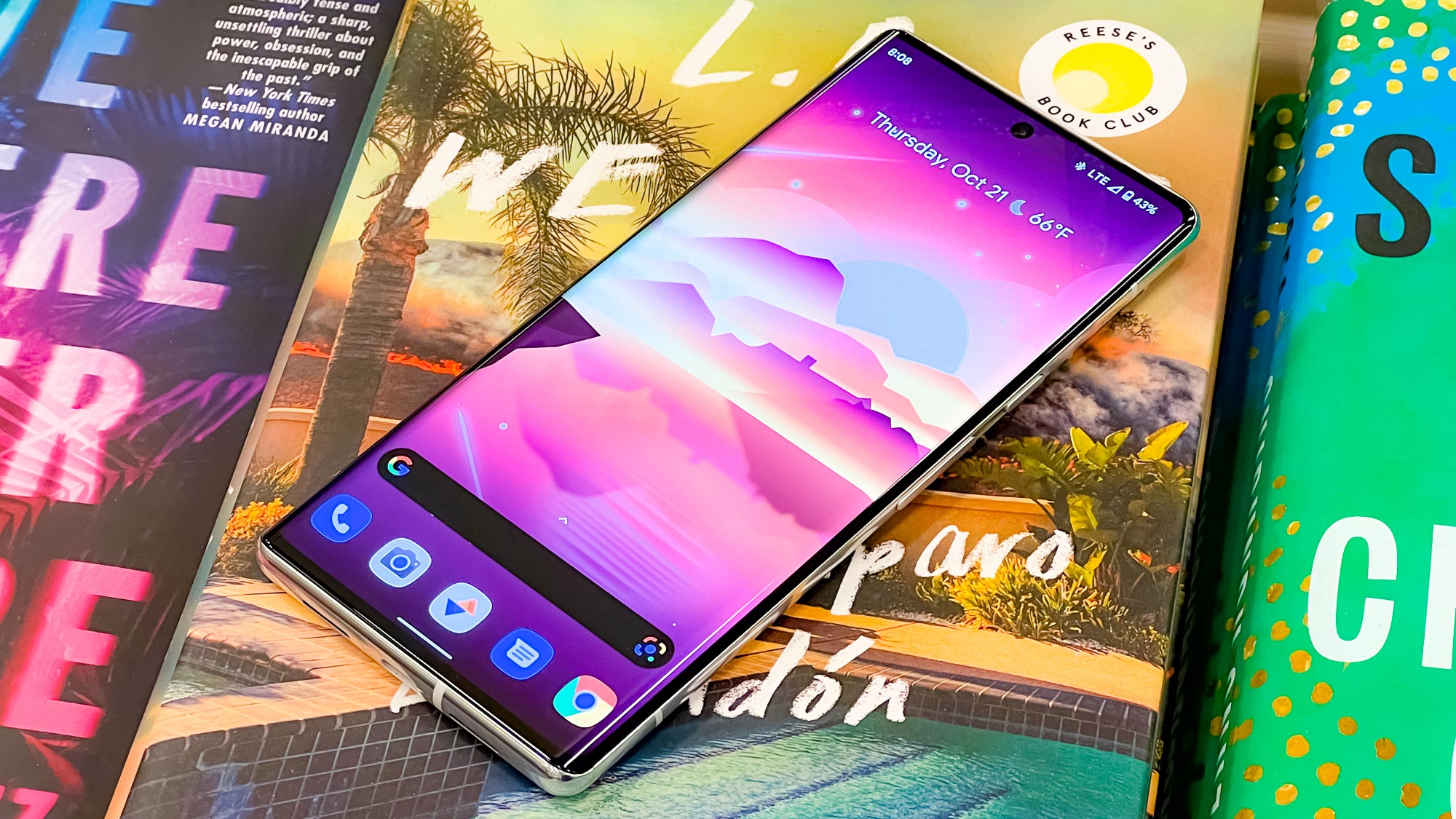
Google’s Tensor chip is meant more for AI tasks, like instant, on-device translation and captioning, the host of AI-powered calling features like Hold for Me and Call Screen, and the fantastic Magic Eraser for removing objects from photos. The OnePlus 10 Pro, while powerful, can do none of those things.
Still, when it comes down to it, the OnePlus 10 Pro is the more powerful device all around. It wins here.
Winner: OnePlus 10 Pro
OnePlus 10 Pro vs. Google Pixel 6 Pro: 5G
5G is an interesting beast with these two phones. The Pixel 6 Pro enjoys the win here because it supports sub-6GHz on all three major US carriers, plus mmWave (not on the unlocked model) and C-band. However, it uses an older 5G modem, which is one theory why the Pixel’s battery life is so poor. But at least you’ll get blanket 5G coverage with your carrier.
The OnePlus 10 Pro, meanwhile, works flawlessly on T-Mobile 5G and OnePlus says Verizon certification is in the works. But at time of writing, the OnePlus 10 Pro doesn’t support mmWave. Perhaps the most egregious failing on OnePlus’ part is that the 10 Pro doesn’t work with AT&T’s 5G network at all. In 2022, that’s a massive problem.
Winner: Google Pixel 6 Pro
OnePlus 10 Pro vs. Google Pixel 6 Pro: Battery life and charging
With battery life, the OnePlus 10 Pro comes out ahead by a long mile. The Tom’s Guide battery life test involves a phone surfing the web continuously over 5G and the OnePlus 10 Pro went for nearly 12 hours in its adaptive 120Hz mode. For reference, we expect to see phones reach 10 hours on average.
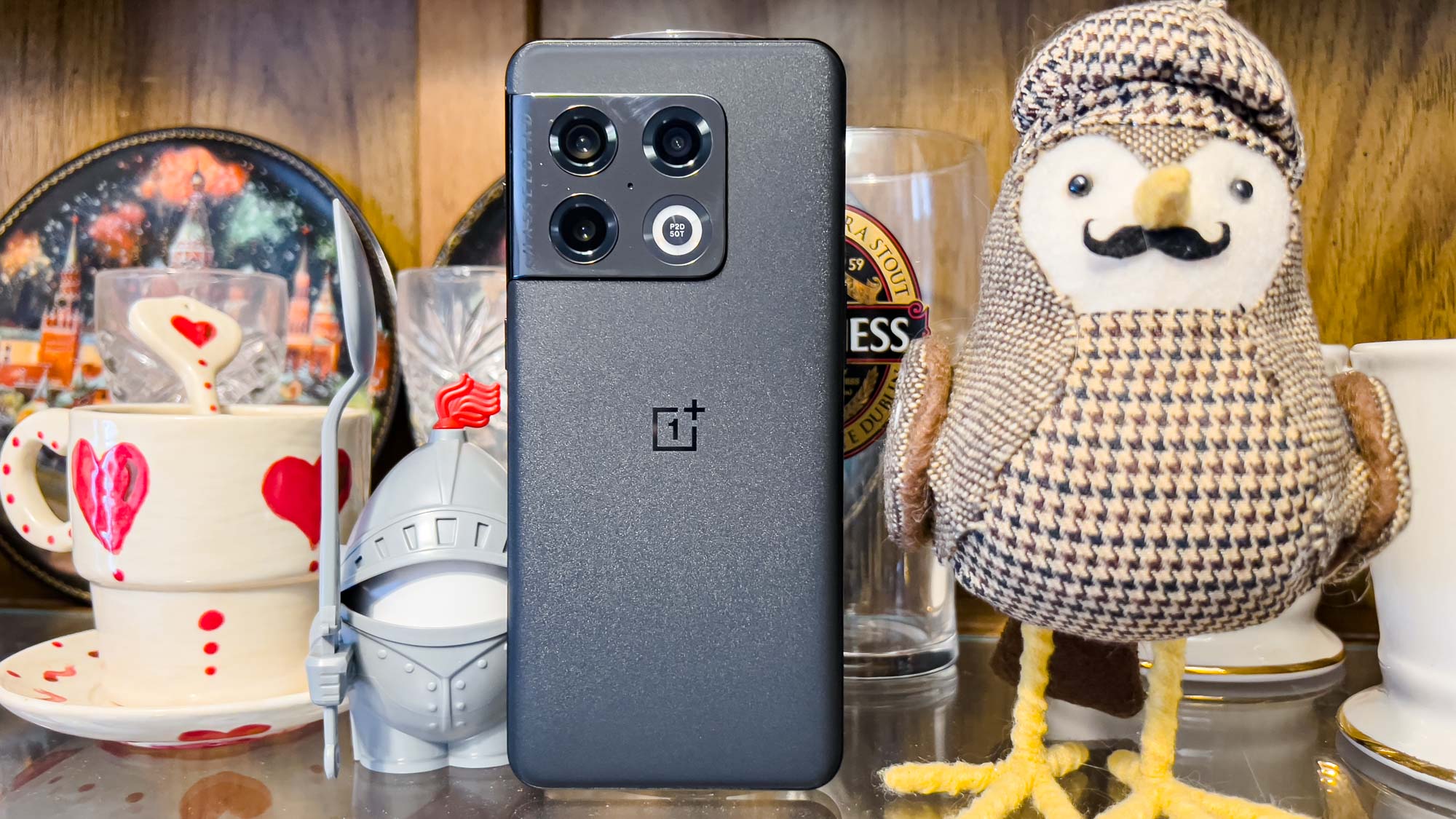
The Pixel 6 Pro, meanwhile, turned in a very disappointing result of 7 hours 49 minutes in the test. Going down to 60Hz only netted an additional six minutes, whereas the OnePlus 10 Pro lasted another 47 minutes at 60Hz.
And for charging, the OnePlus 10 Pro once again wins. At 65W, the phone’s 5,000 mAh battery can recharge from 0 to 93% in just 30 minutes. And there’s support for 50W wireless charging. The Pixel 6 Pro tops out at 23W wired and 12W wireless with standard Qi chargers. It only hit 40% in the 30-minute wired recharge test.
Winner: OnePlus 10 Pro
OnePlus 10 Pro vs. Google Pixel 6 Pro: Software and special features
The OnePlus 10 Pro ships with OxygenOS 12.1, the latest version of its software running on top of Android 12. It has a lot of tweaks included, such as three different dark mode intensities, the new OnePlus Shelf, and the updated Work Life Balance mode.
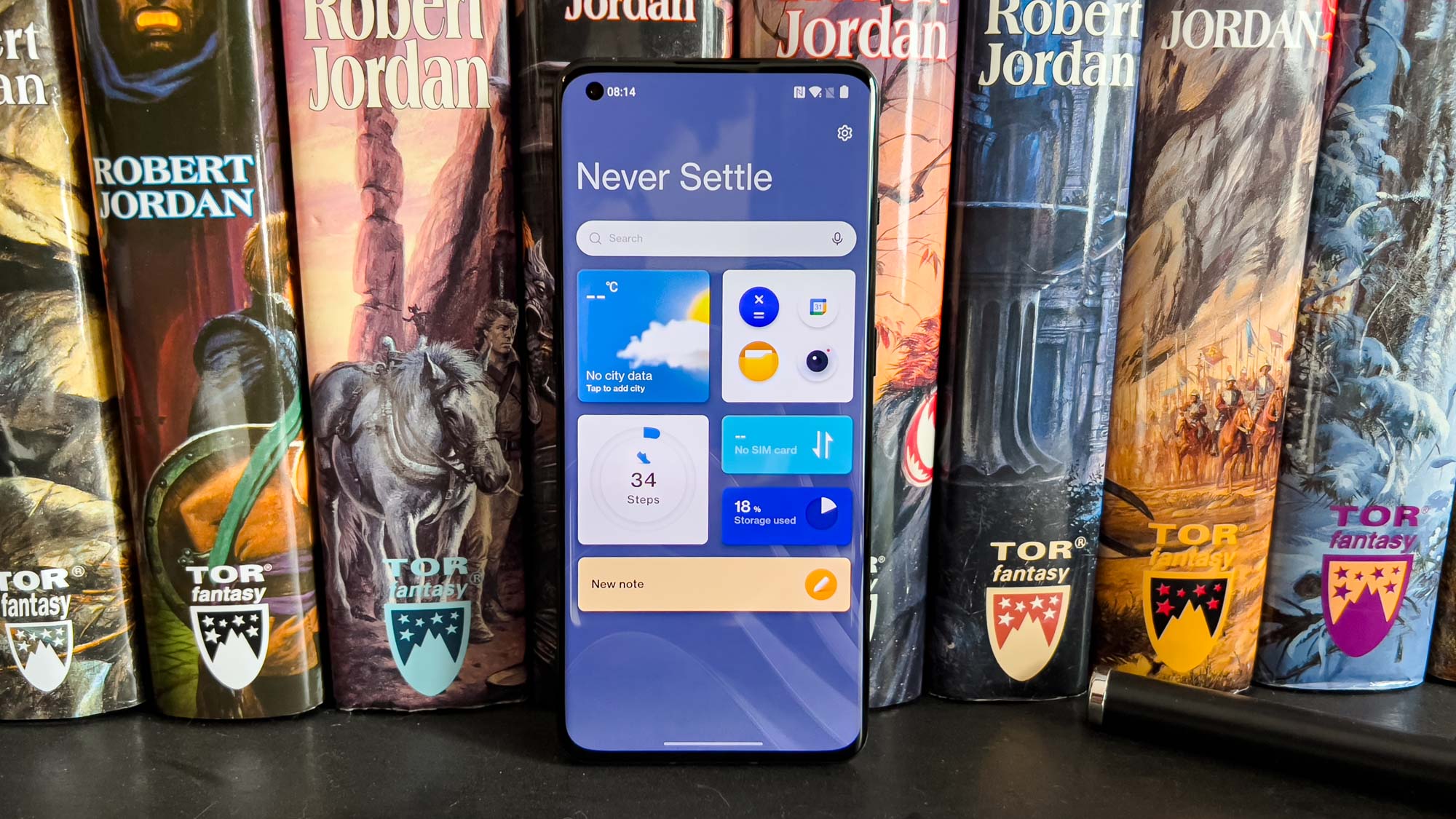
The Shelf caught my attention right out of the gate, since it now lives next to the notification shade, accessed via a swipe down on the right side of the status bar. It displays basic info, like calendar appointments, weather, steps, and the ability to add other widgets. If you use your phone right-handed like I do, it’s easy to accidentally summon the Shelf instead of the notification shade.
Work Life Balance 2.0 is a way of siloing your work and personal digital lives. If you use your phone for work and play, this mode helps you keep work from interfering with your other phone usage. Or you can keep non-work apps from bothering you during office hours. You can toggle this mode with location or Wi-Fi network information, such as when you connect to your office’s Wi-Fi.
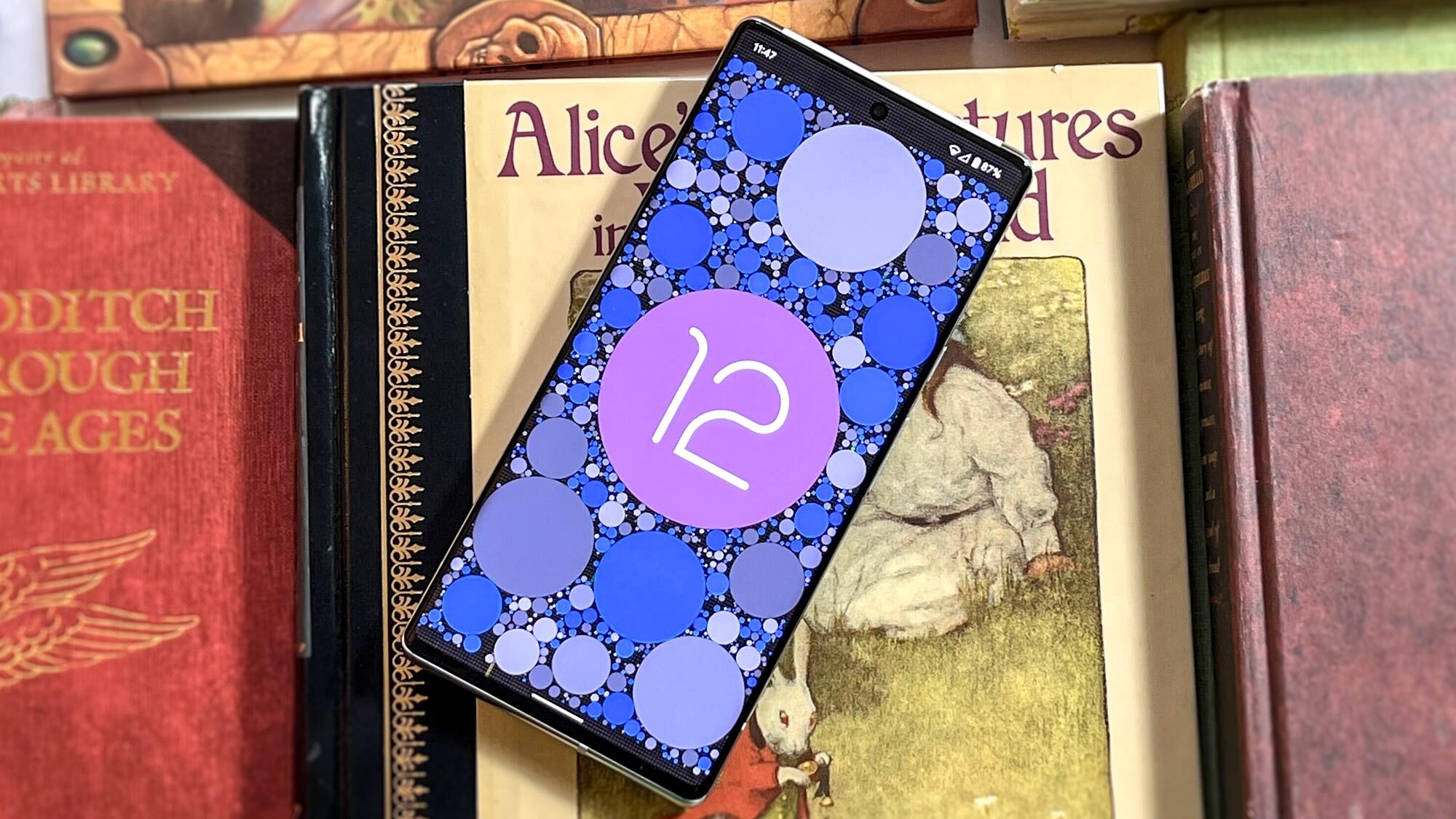
Another feature we really liked is OnePlus Scout, which is a universal device search. You can look for documents, photos, apps, and even perform web searches. It’s similar to Spotlight in iOS.
The Pixel 6 Pro doesn’t have nearly the same amount of features, which is common for Pixels. You still get access to the new Material You theming system, which changes system colors based on your wallpaper, and the new Game Mode. But Pixels excel in their secondary, less in-your-face features like Call Screen, Hold for Me, estimated wait times for phone calls, and the powerful voice dictation options.

For example, voice texting on the Pixel 6 Pro is hands-down the best that you’ll find on a smartphone. It understands speech incredibly well, not to mention punctuation and even context based on who you’re texting (like if your contact’s name has non-traditional spelling). You can even enter emojis with your voice, or commands like “Clear,” “Send,” and “Stop.”
The OnePlus 10 Pro will see three Android platform updates and four years of security patches. OnePlus is also much slower to get out updates than Google, since the Pixel 6 Pro gets day one access to updates (most of the time). The Pixel 6 Pro is also stuck at three years of Android updates, but it will get five years of security patches.
The OnePlus 10 Pro might have more potentially useful features, but the Pixel 6 Pro will see longer support and faster updates.
Winner: Google Pixel 6 Pro
OnePlus 10 Pro vs. Google Pixel 6 Pro: Overall winner
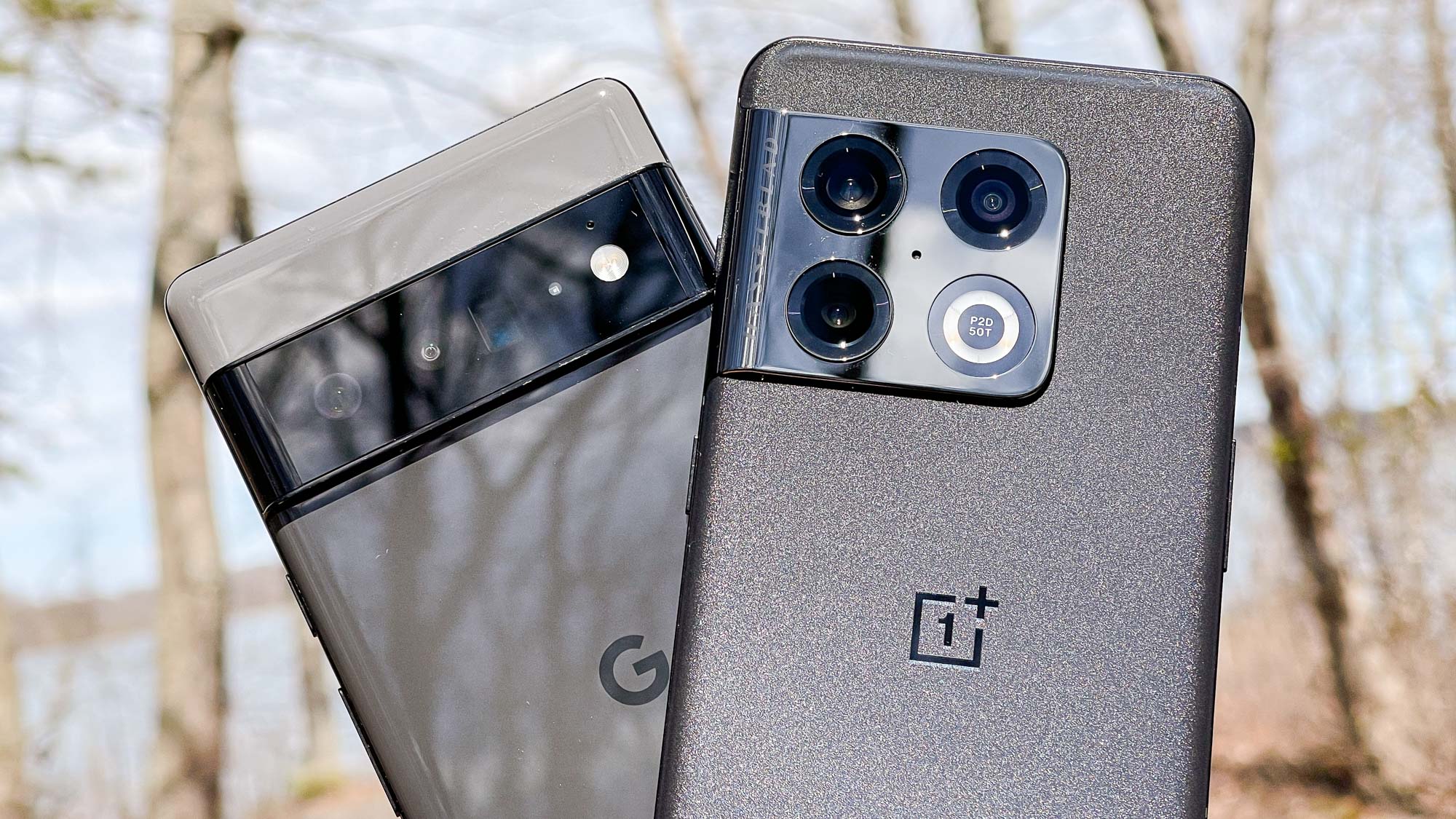
| Row 0 - Cell 0 | OnePlus 10 Pro | Pixel 6 Pro |
| Price and availability (10) | 9 | 10 |
| Design (10) | 8 | 9 |
| Display (15) | 14 | 14 |
| Cameras (20) | 16 | 19 |
| Performance (15) | 13 | 11 |
| 5G (5) | 2 | 4 |
| Battery life and charging (15) | 15 | 10 |
| Software (10) | 9 | 10 |
| Total (100) | 85 | 87 |
The OnePlus 10 Pro comes out ahead when it comes to its better battery life. The Pixel struggles in this regard, while the OnePlus is a champ. Going for almost 12 hours in our test is no small feat for an Android flagship. The cameras are also more than good enough in most scenarios.
That said, we still think the Pixel 6 Pro is the better option overall. Not only are its cameras clearly superior, but it has better software support and a brighter display. Plus, it’s not a headache when it comes to 5G. You also get more RAM for the same $899 price.
Whichever phone you go with, you’re getting the best bang for your buck at $899. But we think for most people, the Pixel 6 Pro is the better phone — we just wish the Pixel lasted longer on a charge.
Sign up to get the BEST of Tom's Guide direct to your inbox.
Get instant access to breaking news, the hottest reviews, great deals and helpful tips.

Jordan is the Phones Editor for Tom's Guide, covering all things phone-related. He's written about phones for over six years and plans to continue for a long while to come. He loves nothing more than relaxing in his home with a book, game, or his latest personal writing project. Jordan likes finding new things to dive into, from books and games to new mechanical keyboard switches and fun keycap sets. Outside of work, you can find him poring over open-source software and his studies.
